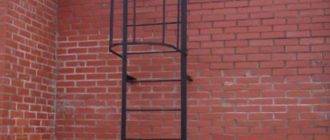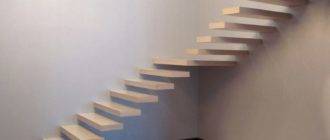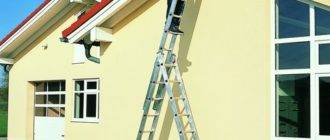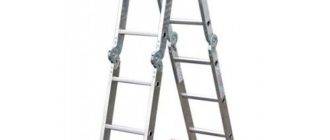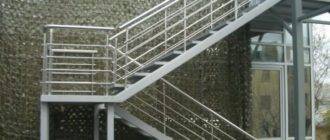What is this product - a stick ladder? In the article we will find out what it is intended for, how it works and what standards it must comply with. In addition, we will discuss methods for testing this type of fire escapes and several alternative solutions used by firefighters.
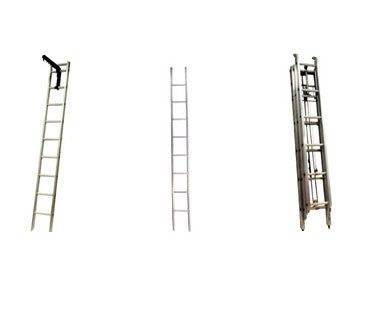
What it is
Actually, before us is an ordinary folding ladder. The material is usually lightweight and fairly strong aluminum. As a rule - since wooden structures are mentioned in the requirements for the test procedure; perhaps they are still preserved in some fire departments.
However: given the limited lifespan of the wood and the annual strength tests, this seems rather unlikely.
Why does the folding ladder have such a strange name? Because it is folded in an unusual way: the bowstrings of the staircase are brought together; in this case, the steps, fixed movably, fit into their grooves. The folded length of the structure increases, but it becomes very compact in terms of the rest of the overall dimensions.
The result is a dual-use product:
- In the unfolded state, in front of us is an ordinary staircase, suitable for evacuating people through the window openings of the first and (sometimes) second floors, or for firefighters to access the source of fire bypassing the paths blocked by fire.
- The folded ladder can be used to punch through obstructing wooden partitions and door panels.
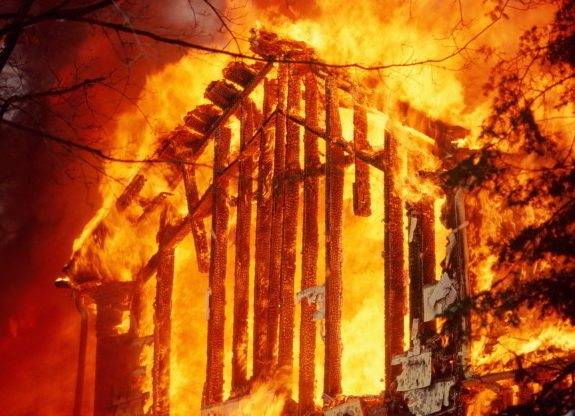
Specifications
Let's find out what are the dimensions and other characteristics of the product we are interested in.
The product of the Khartsyzsk machine-building plant under the simple name LP will serve as a model for us.
- Working length - 3100 mm with a tolerance up or down equal to 20 millimeters.
- The folded length is slightly longer - 3380 millimeters... The tolerances are, of course, the same.
- Unfolded width - 300 mm with a permissible deviation of 5 mm.
- Height (in other words, the thickness of the bowstrings) - 50 millimeters with a tolerance of 1 mm.
- The distance between the steps of the staircase is 340 millimeters (plus or minus 5 mm).
- Permissible static load on one stage - no more than 200 kgf; however, only one person can be on the stairs at a time.
- Weight should not exceed 9.7 kg... The ladder is designed to be carried and used by one firefighter.
- The force required to bring the folded ladder into position should not exceed 80 Newtons (about 8 kgf).
A number of characteristics may vary depending on the manufacturer. It is easy to find products with eight and nine steps on sale; a German-made product HS-1 has a length of 3050 mm with a width of 310 mm; other insignificant deviations are possible.

Price
It depends more on the manufacturer than on the characteristics of the product. The notorious HS-1 is sold in Russia for 280 euros; at the same time, the price of a ladder made in Russia by LPMK is only 2655 rubles.
Documentation
Let's study the data sheet for the product already familiar to us from the Khartsyz plant.
It contains:
- Description of the purpose of the product.
- Completeness.
- The technical characteristics that we have already studied in one of the previous sections of the article.
- Instructions for use and description of the principle of operation.
- Manufacturer's acceptance and warranty information.
- Information about how the product is packaged, stored, and transported.
- List of safety measures when using the stairs.
- Maintenance procedure.
Let's pay attention to the main points.
Appointment
Only indoor and outdoor use is mentioned - for lifting through window openings. Not a word about using a ladder as a battering ram. Thus, the manufacturer completely disclaims responsibility for possible damage caused by improper use of the ladder.
Equipment
There are two points in the list:
- The staircase itself.
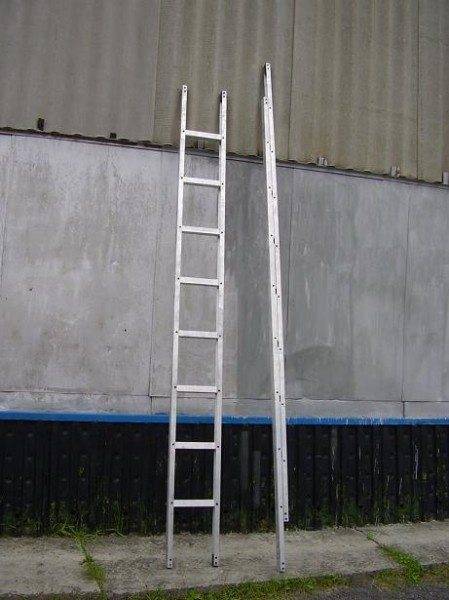
- Passport. It is also the instruction manual and description.
Principle of operation and guidance for use
To be honest, this section does not provide any information that would not be obvious.
- The ladder consists of eight steps and two bowstrings, which are connected to them by hinges. The bowstring design allows the steps to completely retract into their grooves when folded.
- The product is folded and unfolded by hand by one person. To bring it into working position, it is enough to set the bowstrings vertically and push them apart. By sliding them with a mutual longitudinal offset, we will fold the ladder.
Acceptance and warranty
Here are the signatures and seals of the technical control department on the recognition of the ladder as suitable for use. The warranty period, subject to all standards of operation, storage and transportation, is 12 months.
Let's be realistic: taking into account the specifics of the conditions of a real fire, a product that has passed pre-operational tests in the future can be safely considered non-warranty.
When it comes to saving people, hardly anyone will pay attention to the norms of exploitation.
Packaging, transport and storage
- For transportation, lattice boxes made of wood are used; however, upon agreement with the customer, a batch of stairs can be sent without them.
- Storage and movement conditions should protect stairs from mechanical damage and other adverse effects.
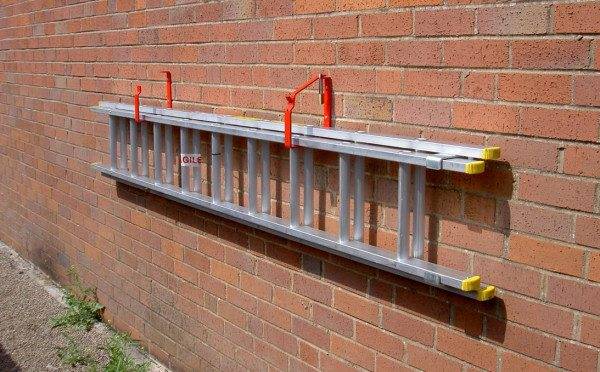
- After one year of storage, the stairs should be checked. The procedure for checking and, if necessary, testing is the same as for commissioning.
Security
Security measures are quite predictable and standard.
- Before starting to work with the product, firefighters must be briefed and tested.
- Taking off stairs from a fire truck, don't hit it on the ground. Aluminum is not the most durable of metals.
- The product should only be used for its intended purpose. Simply put - the manufacturer does not allow the manufacturer to knock out partitions and doors with a folded staircase. However, as already mentioned, this point is hardly given serious attention in case of fire.
- When unfolding and folding the stick ladder, you need to hold it by the bowstrings. Otherwise, it is easy to injure the hands caught between the bowstring and the step.
- You need to go up and down carefully, carefully and slowly. Given the intended purpose of the product, this point evokes some irony.
- You should not lean the laid out ladder on surfaces and objects on which there is electric voltage, cling wires to it and commit other crimes against the rules of electrical safety. After all, aluminum is a conductor.
Inspection, testing and maintenance
Although this point is present in the documentation for the product we are studying, we will put it in a separate section of the article. The source of information will serve us not only the technical passport, but also the fire safety rules.
So how often do you need to inspect and test stick fire escapes? Is it possible to do this work with your own hands or does it require any special equipment?
Let's summarize all the information available to us.
- Frequency of tests - once a year, upon commissioning and after any repair (excluding painting). If the ladder has not passed the test, its use is prohibited.
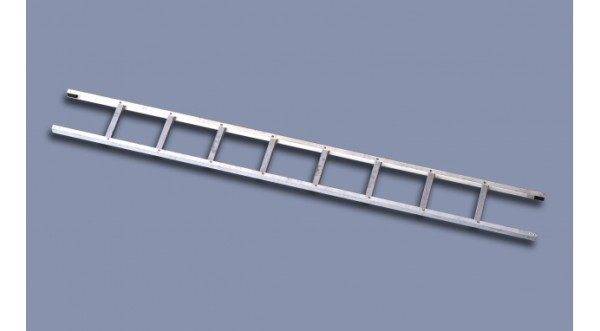
- During the inspection, the appearance and condition of the bowstrings and steps are checked. Dents, cracks and potholes should not be present.
- During inspection, the ladder should unfold and fold without much effort. The exact measurement of the required force is carried out during testing.
- The technical condition check is carried out during acceptance for storage after each use. Before moving to the warehouse, the staircase not only undergoes a visual inspection, but is also cleared of dirt, soot and moisture. If necessary, the hinges are lubricated.
- To measure the force required for laying the ladder, it is enough to clamp one of the bowstrings in a vice and apply a constant force to the second bowstring using a dynamometer.
- Finally, the main characteristic of a stick fire escape - its carrying capacity - is tested as follows:
-
- The product is unfolded and placed against the wall so that the angle between the bowstrings and the horizon is 75 degrees.
- Then, a fixed weight load is suspended from the middle stage, or a corresponding winch force is applied (controlled by a dynamometer) or a special stand. The duration of the test load is 2 minutes.
- After the tests, the ladder is re-visually inspected. Deformations and other damage should not appear; in addition, when transforming into a working and compact position, the movable joints must not jam.
- The test load for metal stick ladders is 200 kgf (2 kN), for wooden - 120 kgf (1.2 kN).
Alternatives
What other types of portable ladders can be used to extinguish fires?
Assault
This type of stairs, unlike the previous one, does not transform. The aluminum ladder is a sturdy construction of box-shaped bowstrings and steps flared in them. A steel toothed hook is used to secure the top edge in a window opening or at the edge of a roof.
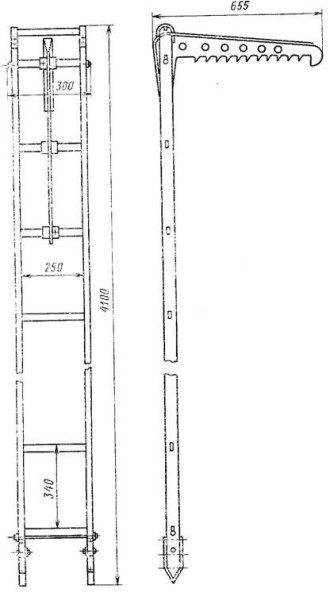
As an example, let us consider another product of the Khartsyzsk machine-building plant - the LSh assault ladder.
- The length of the product is 4110 mm.
- Width - 300 mm.
- Departure of the hook over the surface of the bowstrings - 650 mm.
- The distance between the axes of the steps is 340 mm.
- Weight - no more than 11 kg.
Curiously, ladder tests are carried out in two ways.
It is hung on a hook close to the wall and tested with a load of 200 kgf; then tests are carried out with a load of 160 kgf with fixation with the end tooth of the hook.
In both cases, the force is applied to the second stage from the bottom.
Retractable
The retractable fire escape consists of three telescopically connected bends. A system of ropes and blocks is used to bring it into working condition.
Unlike the previous two types of fire escapes, this one is designed to be moved and used by two people: the mass of the IDP (retractable fire ladder) can reach 48 kilograms, and the force on the rope is 50 kilograms.
During the tests, each stage of the IDP is loaded; the load is an impressive 200 kgf, which is applied perpendicular to the ladder in a horizontal position. In addition, it is tested by simultaneously applying 100 kgf to the middle stage of each knee in a position at an angle of 75 degrees to the horizontal and a load of 200 kgf applied to the middle of the middle knee.
The duration of the load application is still the same 120 seconds.
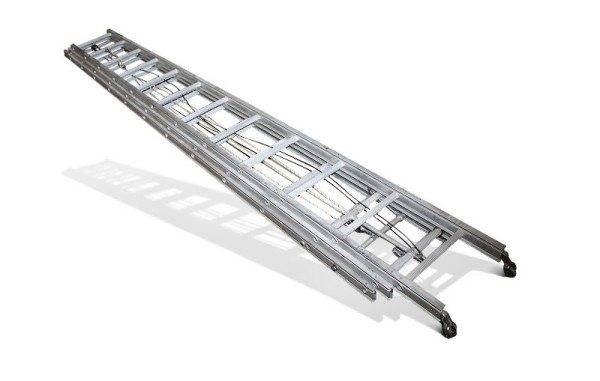
Output
Designed for use in extreme situations, fire escapes are extremely reliable. Rigorous testing requirements make them completely safe to use - as much as it can be safe to work in a fire.
As usual, in the video presented in this article, you will find additional information on this topic. Good luck in job!

